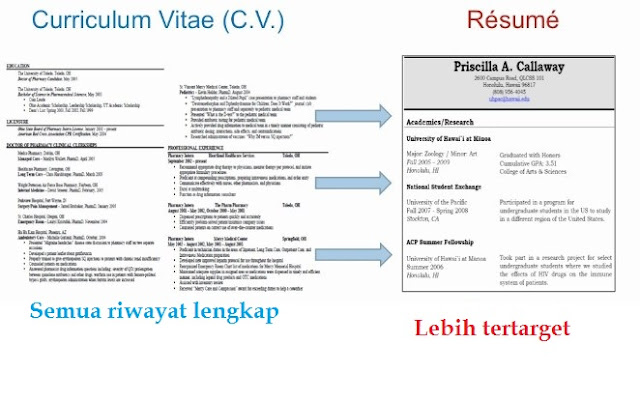CV vs. Resume: Are They Really That Different?
So, you're on the hunt for a new gig, eh? Maybe you're tired of the soul-crushing commute, or maybe those office birthday cakes just aren't cutting it anymore. Whatever the reason, you've stumbled upon a crucial crossroads: the dreaded CV versus resume dilemma. Don't worry, you're not alone. It's a question that haunts job seekers around the globe, especially if you're used to using "CV" and "resume" interchangeably.
Let's cut to the chase. In many parts of the world, particularly North America, a resume is your trusty sidekick for most job applications. Think of it as a highlight reel, a concise and punchy snapshot of your skills and experience tailored to a specific job. We're talking one, maybe two pages max. On the flip side, a CV (short for curriculum vitae, which sounds way fancier than it is) is a more comprehensive document. It's like an autobiography of your professional life, diving deep into your academic background, research, publications, presentations, and anything else that screams, "Hire me, I'm awesome!"
Now, here's the catch – the terms "CV" and "resume" are often used interchangeably, which can cause some serious confusion. In some countries, like the UK, India, or Australia, the lines between a CV and a resume are blurrier than a cheap camera lens. They might use "CV" for almost any job application, regardless of length or detail. But before you throw your hands up in defeat and resign yourself to a life of career confusion, take a deep breath.
Understanding the key differences between a CV and a resume, even if the terms are used loosely, can be your secret weapon in the cutthroat job market. Knowing when to whip out a concise resume versus an all-encompassing CV shows potential employers you understand the nuances of the game and you're serious about your career. Plus, it saves you from sending a 10-page dissertation on your cat-sitting experience when a simple one-pager would have sufficed.
So, buckle up, grab your favorite beverage, and let's dive into the nitty-gritty of CVs and resumes. By the end of this, you'll be a job-hunting ninja, expertly wielding your CV and resume to land the job of your dreams. And who knows, maybe you'll even be able to afford those fancy artisanal birthday cakes at the office.
CV vs. Resume: Key Differences
While the specific use of "CV" and "resume" might get a bit fuzzy depending on where you are in the world, understanding the underlying difference in content is key. Here's a simple breakdown:
| Feature | Resume | CV |
|---|---|---|
| Length | Concise (1-2 pages) | Comprehensive (2+ pages) |
| Purpose | Targeted to a specific job | Provides a complete overview of your professional history |
| Content Focus | Skills, experience relevant to the job description | Academic background, research, publications, presentations, etc. |
| Typical Usage | Most job applications in North America | Academic, research, or international job applications |
Even if a region uses "CV" broadly, you would likely still submit a shorter, more focused document for a standard job application and reserve the longer, detailed version for situations where a deep dive into your qualifications is expected.
Five Best Practices for Mastering Your Job Application Documents
No matter what you call them, the documents you submit for job applications should always be top-notch. Here are five tips to make yours shine:
- Tailor, tailor, tailor: Whether it's a CV or a resume, never use a generic template. Each document should be customized to the specific job you're applying for, highlighting the skills and experience most relevant to the role.
- Keep it concise and easy to read: Recruiters and hiring managers sift through tons of applications. Make their lives easier (and increase your chances) with clear, concise language and a visually appealing layout.
- Quantify your achievements: Instead of saying, "Improved sales," say, "Increased sales by 15% in six months." Numbers add credibility and impact.
- Proofread meticulously: Typos and grammatical errors are the fastest way to land in the rejection pile. Triple-check everything, or better yet, have a friend review it too.
- Highlight transferable skills: Even if you're switching industries, identify skills from your previous experience that are transferable to the new role.
Decoding the Job Ad: CV or Resume?
Still not sure which document to send? The job ad itself often holds the answer. Look for clues like:
- Request for a "CV" or "resume": This seems obvious, but always double-check what the employer specifically requests.
- Industry: Academic, scientific, or research-oriented positions typically favor CVs.
- Level of seniority: Senior-level roles often call for a CV to showcase a candidate's extensive experience and accomplishments.
- International applications: When applying for jobs outside of North America, research the specific country's conventions for job application documents.
When in doubt, don't hesitate to reach out to the company or a contact within the organization to clarify their expectations.
Conclusion: Mastering the Job Hunt Hustle
Navigating the world of CVs and resumes might seem daunting at first, but remember, it's all about presenting your skills and experience in the most effective way possible. Whether you're crafting a concise resume or a comprehensive CV, focus on showcasing your unique value proposition and tailoring your application to the specific opportunity. Remember, job hunting is a marathon, not a sprint. Stay persistent, refine your approach, and don't be afraid to ask for help along the way. With the right preparation and a healthy dose of confidence, you'll be well on your way to landing that dream job and finally ditching those office birthday cake blues.
Navigating the doghouse manga chapter 31 a deep dive
Unveiling mulan the real story behind the legend
Unlocking joy the art of buying gift experiences














